 |
| December 28, 2021 | Volume 17 Issue 48 |
Designfax weekly eMagazine
Archives
Partners
Manufacturing Center
Product Spotlight
Modern Applications News
Metalworking Ideas For
Today's Job Shops
Tooling and Production
Strategies for large
metalworking plants
Jaguar handcrafting limited-edition 1953 C-type sports cars
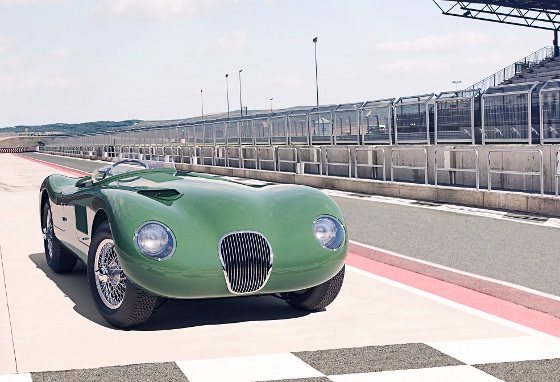
In the this-doesn't-happen-every-day department, Jaguar Classic is handcrafting a limited new run of its iconic Jaguar C-type pioneering race car to celebrate the 70th anniversary of the vehicle's debut. It will be called the Jaguar C-type Continuation and will sport a 1953-spec 3.4-L straight-six engine (producing 217 hp) with triple Weber carburetors. The C-type won Le Mans in 1951, the same year it was unveiled to the world. It introduced aerospace-inspired aerodynamic principles to the sport and, later, disc brakes.
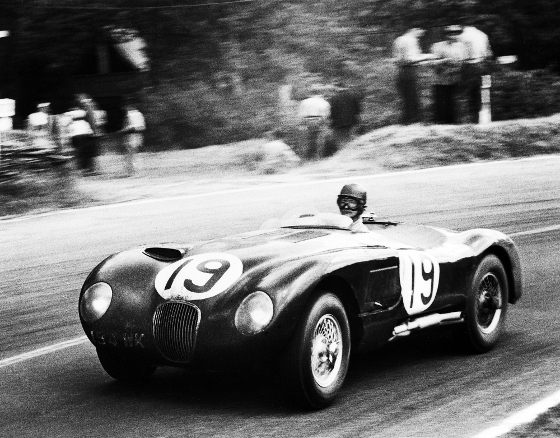
The No.19 Jaguar C-type driven by Peter Whitehead and Ian Stewart at the 1953 Le Mans 24 hours.
The vision of Malcolm Sayer, legendary Jaguar Cars designer, aerodynamicist, engineering prodigy, and artist, the C-type originally raced from 1951 and secured victory at Le Mans its first time out. Its pioneering slippery shape helped the winning drivers of Peter Walker and Peter Whitehead achieve a record-breaking average speed of 93.495 mph.
However, the C-type is particularly notable for the first use of disc brakes in racing starting from 1952. Developed with Dunlop and combined with upgrades to the engine and suspension, they contributed to C-types dominating the 1953 Le Mans 24 Hour, with a first- and second-place finish, and a record-smashing average speed of 105.841 mph. This was the first time the race had been completed at an over a 100-mph average.
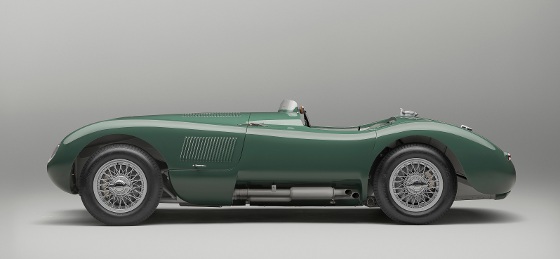
The original C-type was famed for its fluid and aerodynamic shape. Originally dubbed the XK120C and using that iconic vehicle as its base, the C-type would go on to become one of the most important cars in Jaguar's racing history.
The C-type used the XK120's engine, transmission, and suspension, while Malcolm Sayer penned its smooth and aerodynamic body using his established background in engineering and aerodynamics from the aerospace industry to maximum advantage. Using complicated mathematic formulae to create three-dimensional curves, Sayer applied his unique ability for artistic skill and aerodynamic expertise to produce the C-type. He made its exotic design come alive through advanced calculations.
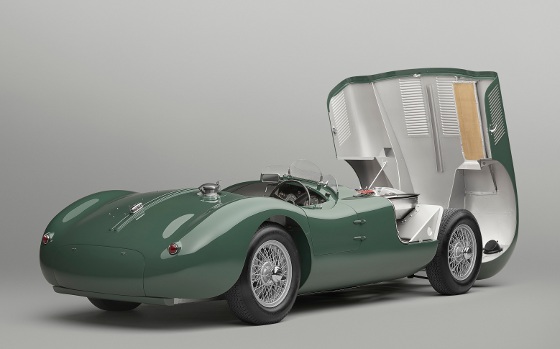
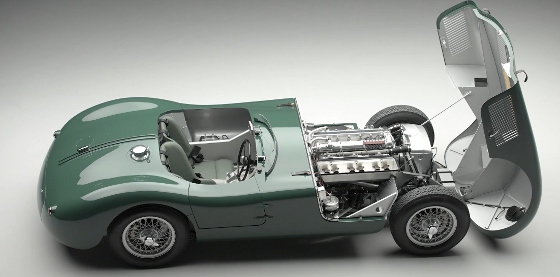
Designed, engineered, and built in just six months, 12 Jaguar personnel arrived with a trio of C-types at the 1951 Le Mans 24 Hours, having driven from the UK in the competing cars. All three cars entered, driven by Stirling Moss and Jack Fairman, Leslie Johnson and Clemente Biondetti, and the partnership of Peter Walker and Peter Whitehead that would go on to win the race.
According to Jaguar, the C-type was designed with a drilled tubular chassis frame to prioritize weight savings and represented key improvements on the XK120 all-round. Developments over time, along with the first application of disc brakes in racing, included the use of 16-in. 60-spoke wire wheels on 1953 works cars to improve cooling for the brakes. Meanwhile, innovations such as using a Panhard rod for the rear suspension also improved the vehicle, honing the C-type into its ultimate 1953 configuration.
Jaguar's second Le Mans triumph came at the 1953 Le Mans 24 Hours. Contributing to this success was the use of three Weber 40DCO3 carburetors that gave a boost to the 3.4-L straight-six engine's horsepower from 197 to 217 hp. A tell-tale clue that identifies 1953 specification models is the front-hood vent that directs air straight into the carburetors at the top of the engine bay, with the assistance of an intricately designed air box.
This is the car that the new C-type Continuation models are based on. Each example will reflect the 1953 Le Mans-winning works team car specification.
As well as using available original drawings and reviewing in-period parts, the Jaguar Classics team needed to consult the original engineering ledger. Copy typists were recruited to fully digitize everything the team needed to know. There were over 2,000 items listed on the original ledger. All of this information then needed to be checked by Jaguar's current team of highly skilled engineers. The team also had access to an example C-type and photographs, along with Malcolm Sayer's notes for the sleek body to help construct a new "Car Zero."
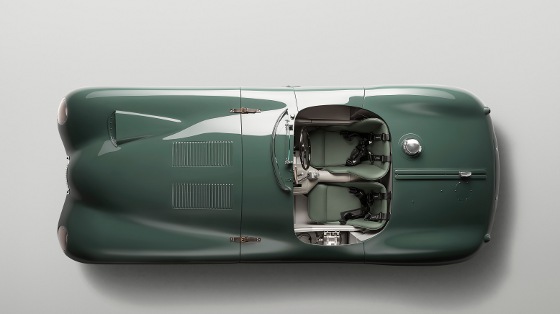
The culmination of all of this information meant a 3D CAD model could be constructed -- the first time a Jaguar Classic Continuation whole vehicle has been created in this way. It began with the major elements of the body and overall structure to provide key visuals to the engineers, and ensure everything matched up to the original information that was available. The state-of-the-art tools that Jaguar Cars has in its arsenal today helped validate the authenticity and ingenuity of the original C-type.
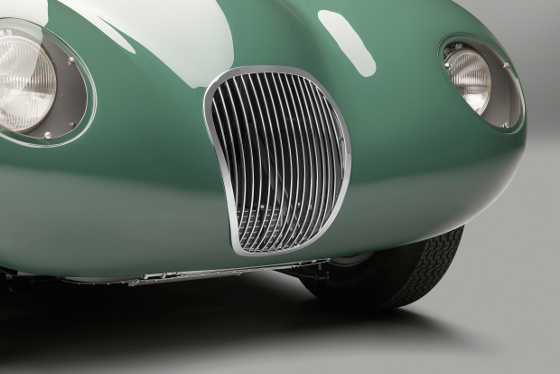
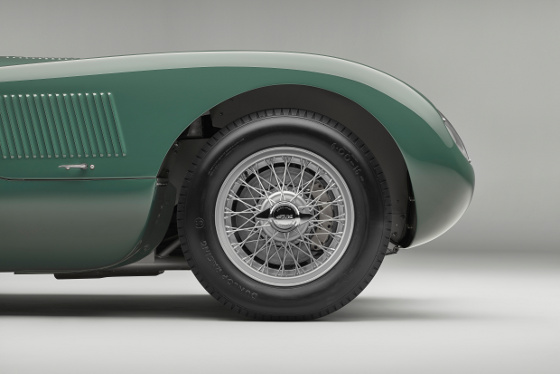
The attention to detail extends to elements such as the brake fluid reservoir, which on the original cars featured brackets that were designed for its application in another vehicle. For the C-type, they serve no purpose, however, all Continuation cars will retain this original anomaly.
Each C-type Continuation will have a four-speed manual transmission and include a Plessey pump fitted to the gearbox. The exterior is hand-rolled 16-gauge aluminum.
Similarly, 1953-specification C-types featured a different Lucas fusebox cover to previous C-types from 1951 and 1952. All Continuation cars feature reconditioned original versions of the correct design that Jaguar Classic sourced, while the Lucas rear-view mirrors fitted to all C-type Continuations have also been sourced as part of an exhausting treasure hunt for authentic components. At the start of the process, just one was available, but Jaguar Classic sourced enough originals to ensure every Continuation features an in-period Lucas rear-view mirror to complement the three-quarter Brooklands race screen and Smiths clocks in the cockpit.
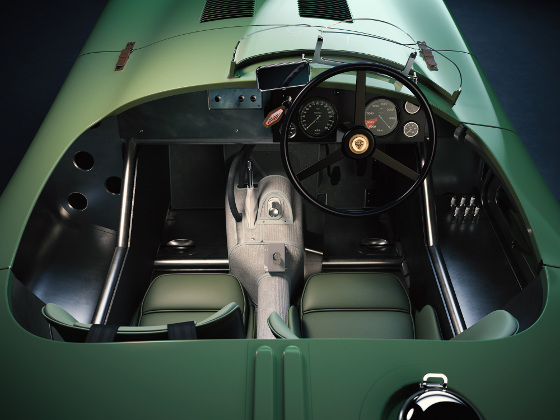
The original-spec clocks and gauges are an illustration of the hours of craftsmanship that go into creating a C-type Continuation. Not only are they faithful to the originals, but the way in which they are integrated -- including the surrounding switches -- is an example of the fine and delicate attention to detail that Jaguar Classic engineers employ to create the perfect example.
The ignition switch on the C-type Continuation also embodies this approach. The precisely re-engineered component replicates the original's start-up procedure, with reliable and high-quality components. The task of intricately reproducing the rev counter ahead of the driver, including the way it revs counter-clockwise, has also been carried out with the emphasis on authenticity and originality.
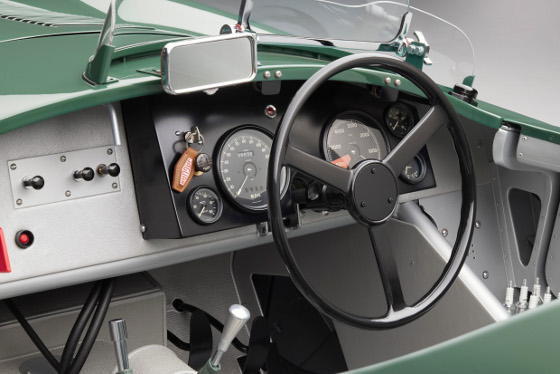
For all C-type Continuations, materials have been sourced for the interior that respect and reference the original's heritage, effortlessly and effectively blending old with new, to ensure authenticity while also providing a high-quality and reliable finish for owners. Hardura trim is used for the cockpit, retrimmed to a new level that wasn't found on the original C-type, but trimmed in silver to evoke the period item.
The Rexine finish on the dashboard and side panels of the Continuation cars is from the last roll of this type of material available, providing as authentic an ambience as possible by delivering the same type of finish from 70 years ago.
The seats, finished in a choice of eight leather hues, are upholstered by Bridge of Weir, and are complemented with racing harnesses -- fitted to a newly constructed component behind the rear bulkhead to comply with FIA regulations. A Bluemel steering wheel is true to the original with no roundel affixed to the center -- it was omitted from the original race cars to reduce glare and reflections -- however, customers can specify the iconic Jaguar badging if they desire.
All C-type Continuations are FIA-approved, with eligibility in participating historic race championships, including the Jaguar Classic Challenge, which races at Le Mans.
Owners have 12 exterior colors to choose from. The meticulous paint process takes one week to complete using modern water-based paint.
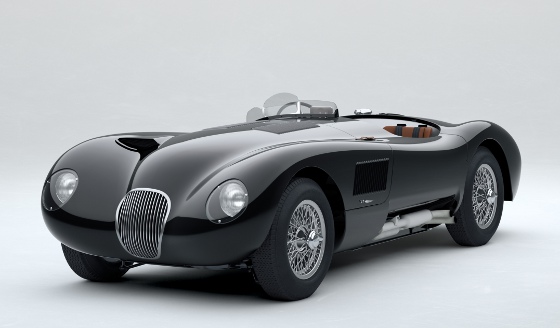
Of the 53 Jaguar C-types built in the 1950s, 43 were sold to private owners, and production C-type specification was more like that of the 1951 Le Mans competing cars, limited to drum-braked cars with twin SU carburetors and 197 hp. Continuation car owners get the 1953 racing specs.
According to Luxury London, the new C-type Continuation limited edition will be capped at 16 units and priced over £1 million ($1,340,250).
Sources: Jaguar, Luxury London
Published December 2021
Rate this article
View our terms of use and privacy policy
